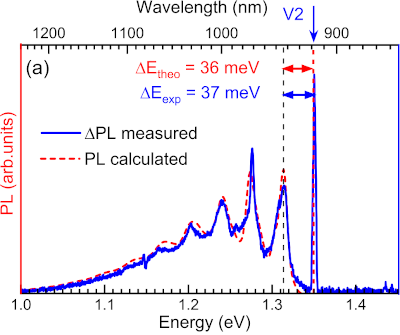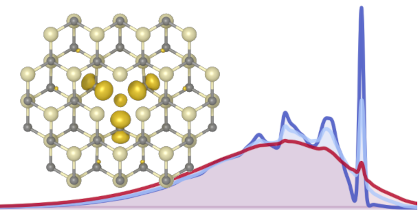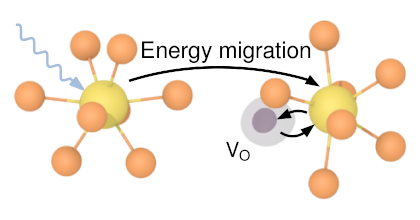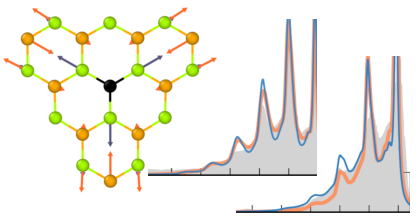Local vibrational modes of Si vacancy spin qubits in SiC
Z. Shang,
A. Hashemi,
Y. Berencén,
H. Komsa,
P. Erhart,
S. Zhou,
M. Helm,
A. V. Krasheninnikov,
and
G. V. Astakhov
Physical Review B 101, 144109
(2020)
doi: 10.1103/PhysRevB.101.144109
Download PDF

Silicon carbide is a very promising platform for quantum applications because of the extraordinary spin and optical properties of point defects in this technologically friendly material. These properties are strongly influenced by crystal vibrations, but the exact relationship between them and the behavior of spin qubits is not fully investigated. We uncover the local vibrational modes of the Si vacancy spin qubits in as-grown 4H-SiC. We apply microwave-assisted spectroscopy to isolate the contribution from one particular type of defects, the so-called V2 center, and observe the zero-phonon line together with seven equally separated phonon replicas. Furthermore, we present first-principles calculations of the photoluminescence line shape, which are in excellent agreement with our experimental data. To boost up the calculation accuracy and decrease the computation time, we extract the force constants using machine-learning algorithms. This allows us to identify the dominant modes in the lattice vibrations coupled to an excited electron during optical emission in the Si vacancy. A resonance phonon energy of 36 meV and a Debye-Waller factor of about 6% are obtained. We establish experimentally that the activation energy of the optically induced spin polarization is given by the local vibrational energy. Our findings give insight into the coupling of electronic states to vibrational modes in SiC spin qubits, which is essential to predict their spin, optical, mechanical, and thermal properties. The approach described can be applied to a large variety of spin defects with spectrally overlapped contributions in SiC as well as in other three- and two-dimensional materials.



